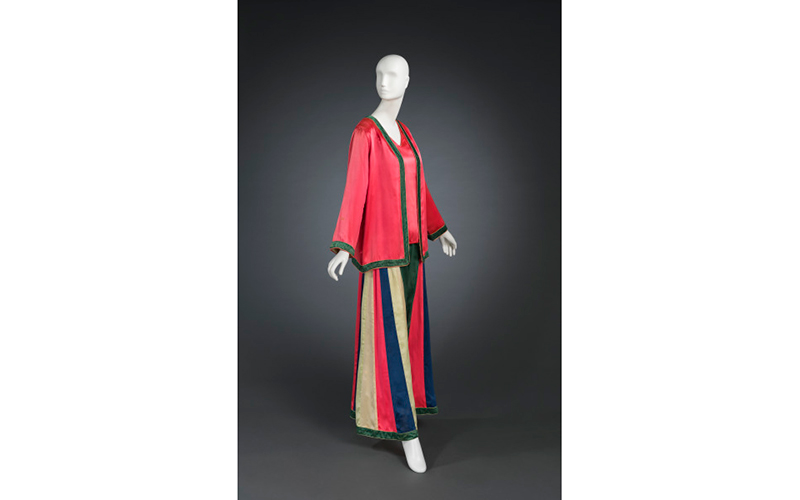- Events & Programs Home
- Calendar
- Accessibility
- Adults
-
Families & Teens
- Families & Teens Home
- 10x10 Teen Art Expo
- Art on the Rise
- Art Together: Art Making for Families with Children Ages 3–5
- Babies Sing with May Festival Minis
- Boy Scouts / Girl Scouts
- CAM Kids Day
- Family Storytime and Gallery Walk
- Family Studio: Art Making for Families with Children Ages 6–12
- Games in the Galleries
- Members-Only Baby Tours
- Public Baby Tours
- REC Reads
- Rosenthal Education Center (REC)
- Saturday Morning Art Class
- See Play Learn Kits
- Summer Camp
- Teachers
- Community Outreach
- Fundraisers
- Plan Your Own Event

- Events & Programs Home
- Calendar
- Accessibility
- Adults
-
Families & Teens
- Families & Teens Home
- 10x10 Teen Art Expo
- Art on the Rise
- Art Together: Art Making for Families with Children Ages 3–5
- Babies Sing with May Festival Minis
- Boy Scouts / Girl Scouts
- CAM Kids Day
- Family Storytime and Gallery Walk
- Family Studio: Art Making for Families with Children Ages 6–12
- Games in the Galleries
- Members-Only Baby Tours
- Public Baby Tours
- REC Reads
- Rosenthal Education Center (REC)
- Saturday Morning Art Class
- See Play Learn Kits
- Summer Camp
- Teachers
- Community Outreach
- Fundraisers
- Plan Your Own Event
Hostess Pajamas: Blouse, Pants, and Jacket
Hostess Pajamas: Blouse, Pants, and Jacket
- Home
- Plan Your Visit
- Art
-
Events & Programs
- Events & Programs Home
- Calendar
- Accessibility
- Adults
-
Families & Teens
- Families & Teens Home
- 10x10 Teen Art Expo
- Art on the Rise
- Art Together: Art Making for Families with Children Ages 3–5
- Babies Sing with May Festival Minis
- Boy Scouts / Girl Scouts
- CAM Kids Day
- Family Storytime and Gallery Walk
- Family Studio: Art Making for Families with Children Ages 6–12
- Games in the Galleries
- Members-Only Baby Tours
- Public Baby Tours
- REC Reads
- Rosenthal Education Center (REC)
- Saturday Morning Art Class
- See Play Learn Kits
- Summer Camp
- Teachers
- Community Outreach
- Fundraisers
- Plan Your Own Event
- Give & Join
- About
- Tickets
- Calendar
- Exhibitions
- Collections
- Blog
- Shop
- Art
- Exhibitions
- What, Me Worry? The Art and Humor of MAD Magazine
- Recall. Reframe. Respond. The Art of Paul Scott
- Rediscovered Treasures
- Special Features
- Upcoming Exhibitions
- Past Exhibitions
- Online Exhibitions
- Explore the Collection
- Provenance and Cultural Property
- Conservation
- Meet the Curators
- Digital Resources
- Art Bridges Cohort Program

Hostess Pajamas: Blouse, Pants, and Jacket, 1930–32, United States, silk, Gift of Mrs. Eugene W. Kettering, 1973.171a–c
Verbal Description
Hello, my name is Eric Le Roy and I am the Associate Director for Docent Learning at the museum. I will be reading the verbal description for the Hostess Pajamas: Blouse, Pants, and Jacket in Unlocking an Art Deco Bedroom by Joseph Urban.
Made of silk, the museum’s Hostess Pajamas, comprised of a Blouse, Pants and Jacket, are from the United States. They were a gift from Mrs. Eugene W. Kettering. The accession number is 1973.171a-c.
An ensemble of a Blouse, Jacket, and Pants make up the museum’s Hostess Pajamas. The blouse is a loose-fitting V-neck shell in coral pink. The matching long-sleeved jacket is also loose-fitting, V-neck, and open; it does not have closures. It is also coral pink but has a medium green trim around the neckline, down the front, and along the hem of the jacket and sleeves. The pants are wide-legged and loose-fitting. They have broad vertical stripes in coral pink, cobalt blue, medium green, and white.
Label Copy
Hello, my name is Eric Le Roy and I am the Associate Director for Docent Learning at the museum. I will be reading the label for the Hostess Pajamas: Blouse, Pants, and Jacket in Unlocking an Art Deco Bedroom by Joseph Urban.
Made of silk, the museum’s Hostess Pajamas, comprised of a Blouse, Pants, and Jacket, are from the United States. They were a gift from Mrs. Eugene W. Kettering. The accession number is 1973.171a-c.
The word pajamas comes from the Urdu language: pāy-jāma, "pāy" for leg and "jāma" for garment. An approximation of the word "pajamas" entered the English language in the late 1800s after the British colonized India, where Urdu is spoken. Not long after, Americans adopted both the term and this style of loose-fitting trousers worn by men and women in Asia and the Middle East. By World War I, pajamas had gained popularity as loungewear for American women. Offering freedom and ease, they were worn on the beach, as resort wear, and when hosting at-home parties.
They paved the way for women to wear pants in public. In 1930, a fashion reporter declared, "Pajamas have come to stay because they fill the need for comfort which modern women now demand." This pair of bright, color-blocked silk pajamas are like those worn by Elaine Wormser for a photoshoot in her bedroom.
Cincinnati, OH 45202
Toll Free: 1 (877) 472-4226
Museum Hours
Museum Shop
Terrace Café
Library
Cincinnati Art Museum is supported by the tens of thousands of people who give generously to the annual ArtsWave Campaign, the region's primary source for arts funding.

Free general admission to the Cincinnati Art Museum is made possible by a gift from the Rosenthal Family Foundation. Exhibition pricing may vary. Parking at the Cincinnati Art Museum is free.
Generous support for our extended Thursday hours is provided by Art Bridges Foundation’s Access for All program.

General operating support provided by:



